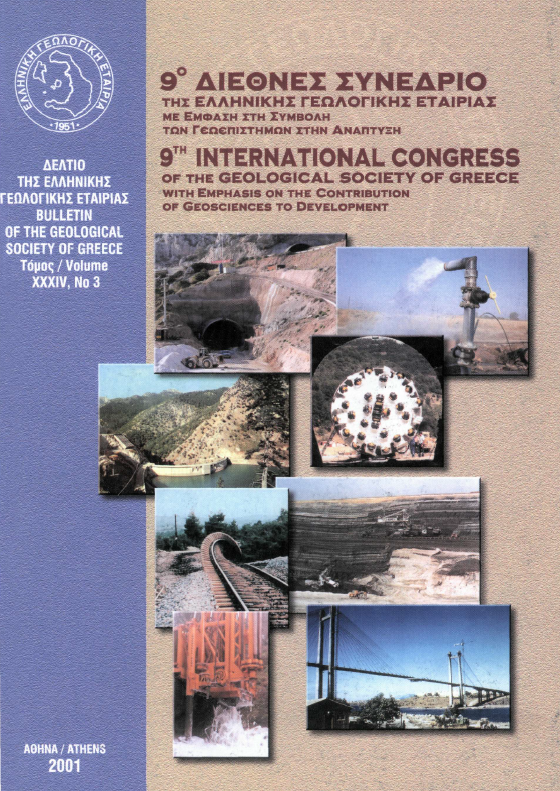Wolframite - stibnite mineral assemblages from Rizana Lachanas, Macedonia, Greece and their possible use as flux agent in the manufacturing of clinker

Abstract
In the current study it is investigated the possibility of use of wolframite and stibnite ore from Lachanas area, Northern Greece, as flux agent in the production of cement. The stibnite and wolframite deposits of that area are typical of the Sb-W type of mineralization. The Sb ore occurs more massive and volumetrically more extended than W ore. The ore bodies have been partially altered to secondary minerals of oxidation zone. The neoformed minerals have affected the original Sb and W content of the ore. However the oxidation of the deposit does not affect its use as flux agent in cement industry. It is well known that the most energy demanding stage in the cement industry is the sintering process. It has been found that certain additives may accelerate the sintering reactions and improve the reactivity of the cement raw mix. The minerals, iron rich wolframite, stibnite and a wolframite-stibnite assemblage were selected in order to introduce W, Sb and S in the cement raw mix. One reference sample and 12 test samples prepared by mixing the reference sample with the above minerals in 0.5,1.0,1.5 and 2.0% w/w were studied. The effect on the reactivity of the raw mix is evaluated on the basis of the un-reacted lime content in samples sintered at 1000, 1100, 1200, 1300, 1350, 1400 and 1450°C. It is concluded that minerals containing Sb promote the consumption of the free lime, in the most effective way. The XRD studies, performed in samples that were burned at 1450°C, showed that the diffraction patterns correspond to a structure of a typical clinker, obtained at the above temperatures.
Article Details
- How to Cite
-
ΒΑΣΙΛΑΤΟΣ Χ., ΜΠΑΡΛΑΣ Κ., ΣΤΑΜΑΤΑΚΗΣ Μ., & ΤΣΙΒΙΛΗΣ Σ. (2001). Wolframite - stibnite mineral assemblages from Rizana Lachanas, Macedonia, Greece and their possible use as flux agent in the manufacturing of clinker. Bulletin of the Geological Society of Greece, 34(3), 827–834. https://doi.org/10.12681/bgsg.17086
- Section
- Mineralogy and Crystallography

This work is licensed under a Creative Commons Attribution-NonCommercial 4.0 International License.
Authors who publish with this journal agree to the following terms:
Authors retain copyright and grant the journal right of first publication with the work simultaneously licensed under a Creative Commons Attribution Non-Commercial License that allows others to share the work with an acknowledgement of the work's authorship and initial publication in this journal.
Authors are able to enter into separate, additional contractual arrangements for the non-exclusive distribution of the journal's published version of the work (e.g. post it to an institutional repository or publish it in a book), with an acknowledgement of its initial publication in this journal. Authors are permitted and encouraged to post their work online (preferably in institutional repositories or on their website) prior to and during the submission process, as it can lead to productive exchanges, as well as earlier and greater citation of published work.


